Tools used in Medieval Construction
At the beginning of the castle construction project, the initial tools had to be produced externally. For this purpose, a long-established smithy from the Lavant Valley was commissioned.
Since the construction of our own forge, chisels, tongs, rakes, hoes, shingle knives and shovels have been made on site by our blacksmiths.
In the Middle Ages, three types of shovels were crafted. The earliest form was made from a single piece of wood. Subsequently, wooden shovels were reinforced with metal. There were also shovels with blades made entirely of metal. These included half-round and pointed shovels, as well as spades.
The rakes used in mortar production are made on site and resemble types still commonly used today.
In general, it is fair to say that tools changed very little up to the 20th century compared to those from the Middle Ages. For instance, the medieval trowel does not differ significantly from its modern counterparts. Most illustrations show pointed or rounded triangular trowels.
In woodworking, we are familiar with crosscut saws, panel saws, keyhole saws, frame saws and other types such as rip and pit saws.
The frame saw used in castle construction for cutting planks weighs six kilograms. The saw blades are either purchased or specially modified for our needs by the master blacksmith. Broad axes and hatchets are produced on site.
To hollow out round logs, different types of adzes are used, while shingle knives are used to split larch logs.
The wooden handles are made from hazel or ash. These handles are attached either through a hole in the blade or via a socket riveted to the shaft. On the shaving horse, the handles are then finished with a drawknife.
A spirit level, plumb line and rake are used by the masons to mix the mortar.
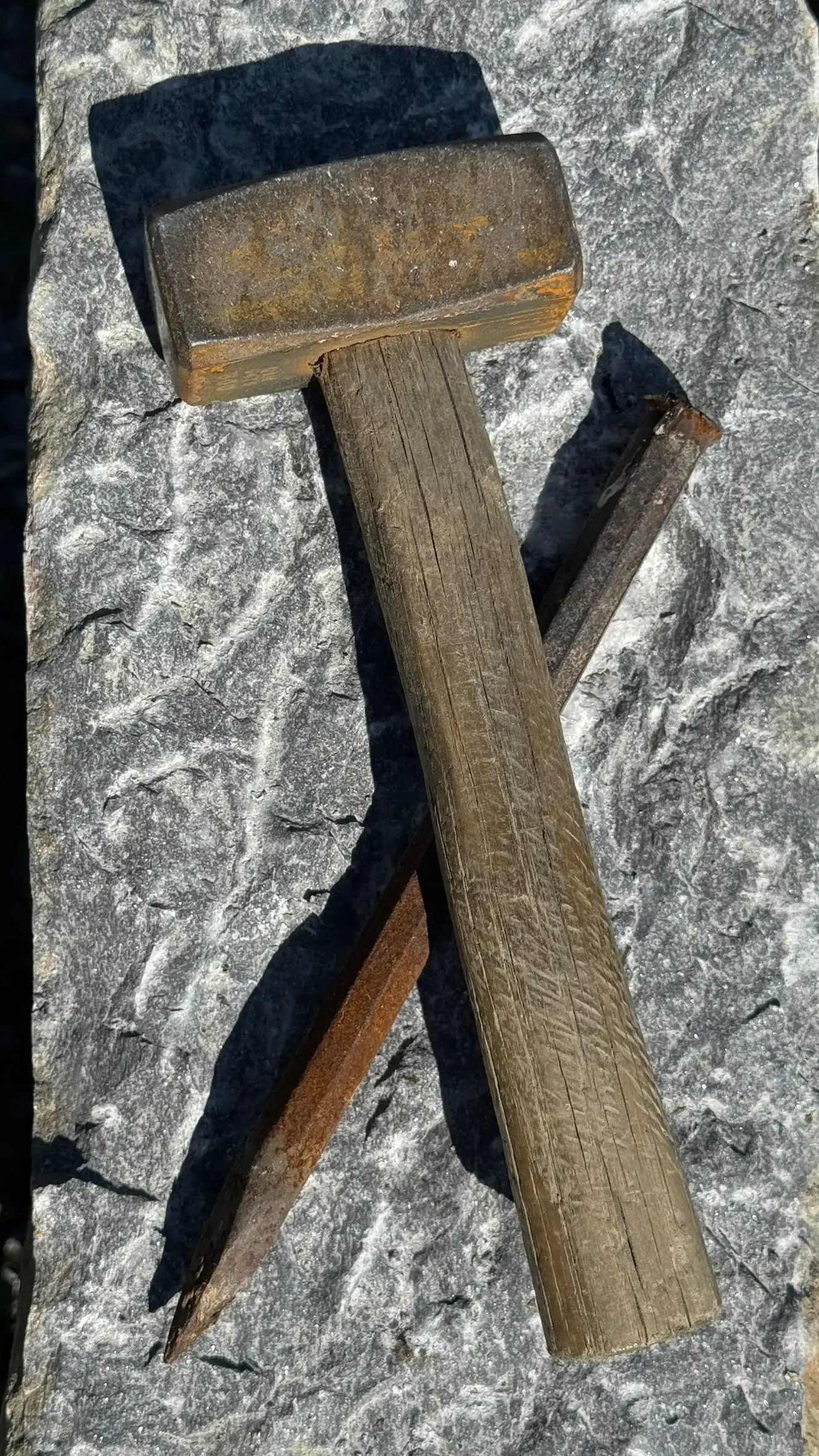
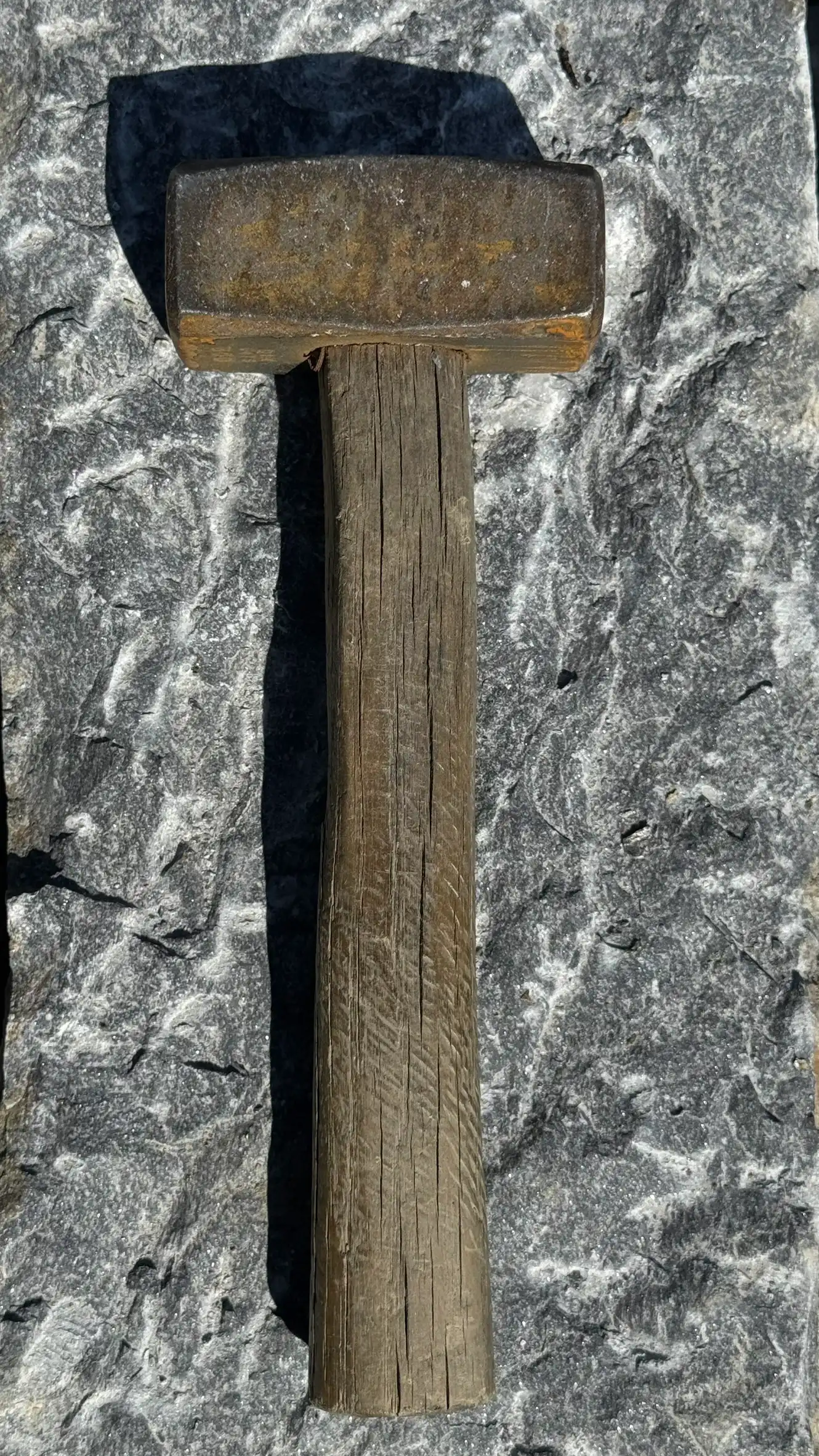
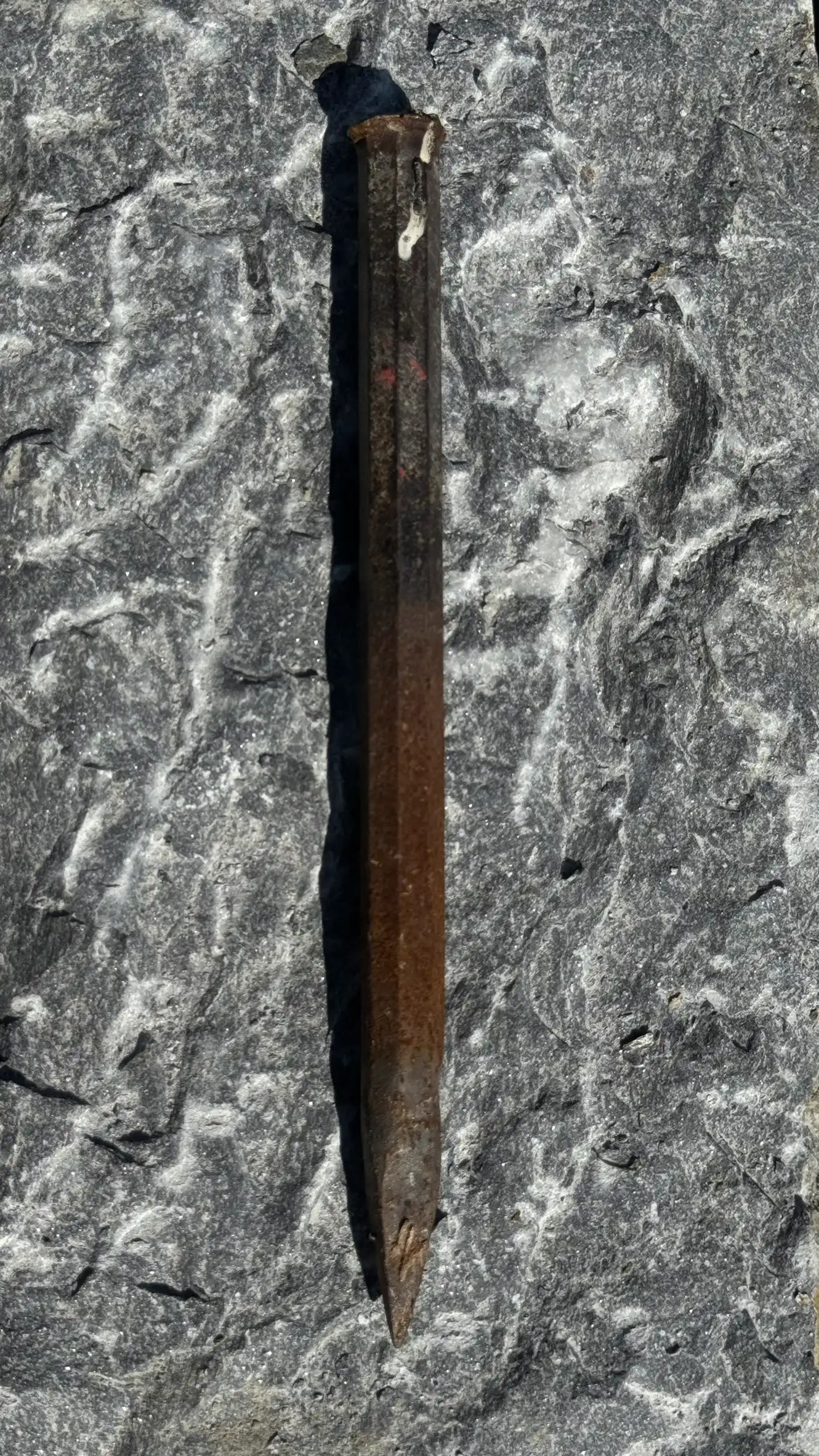
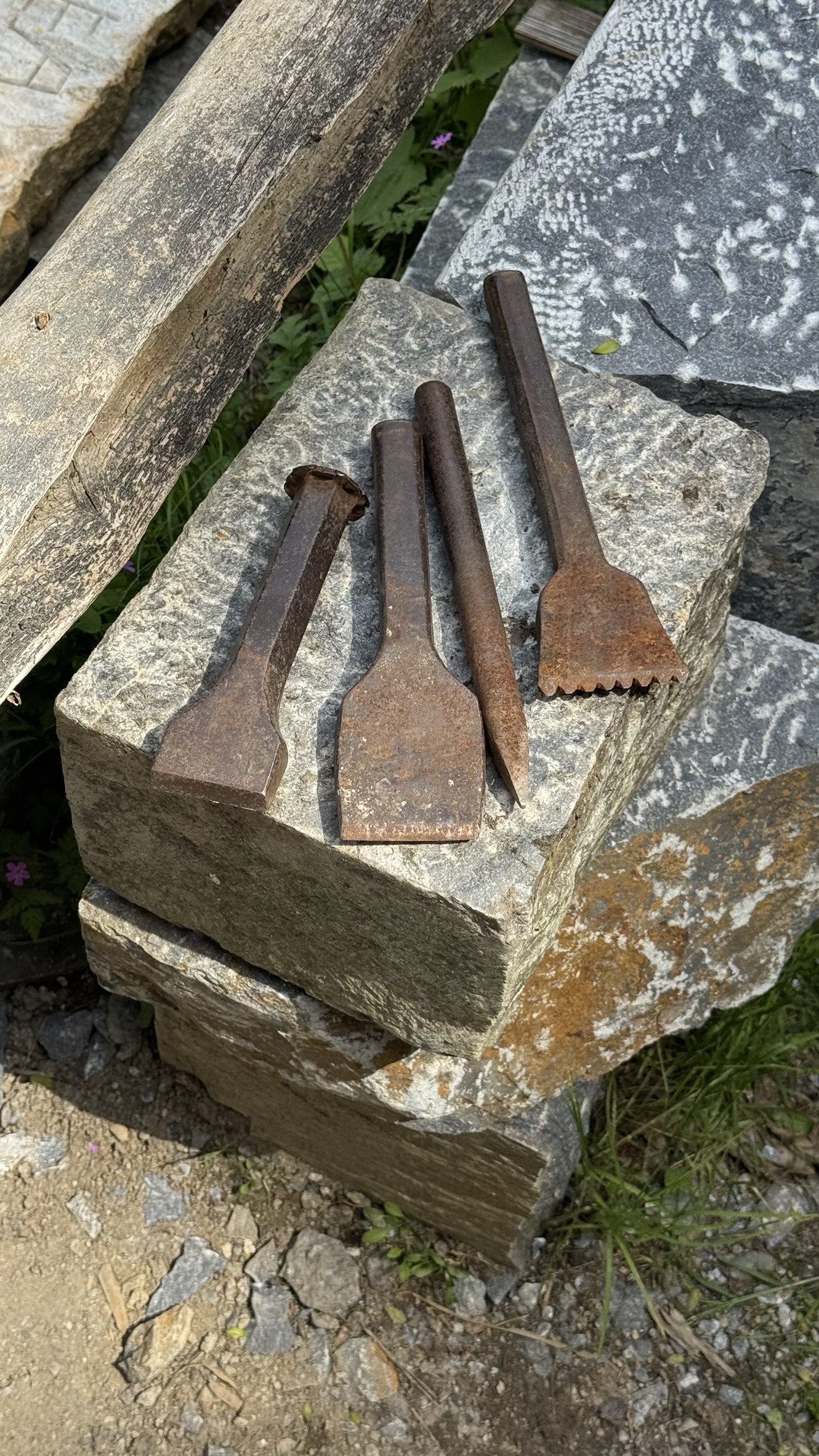
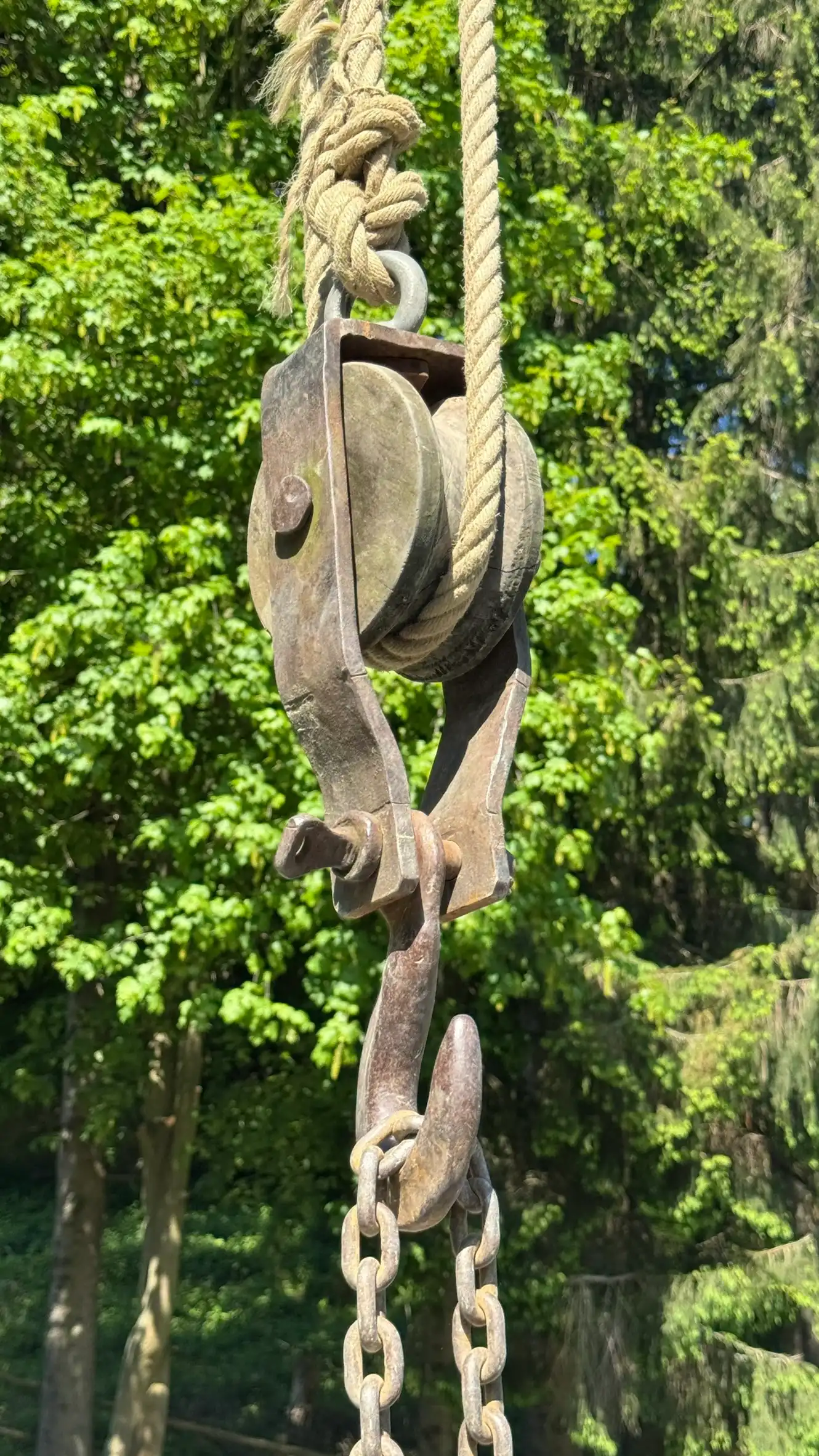
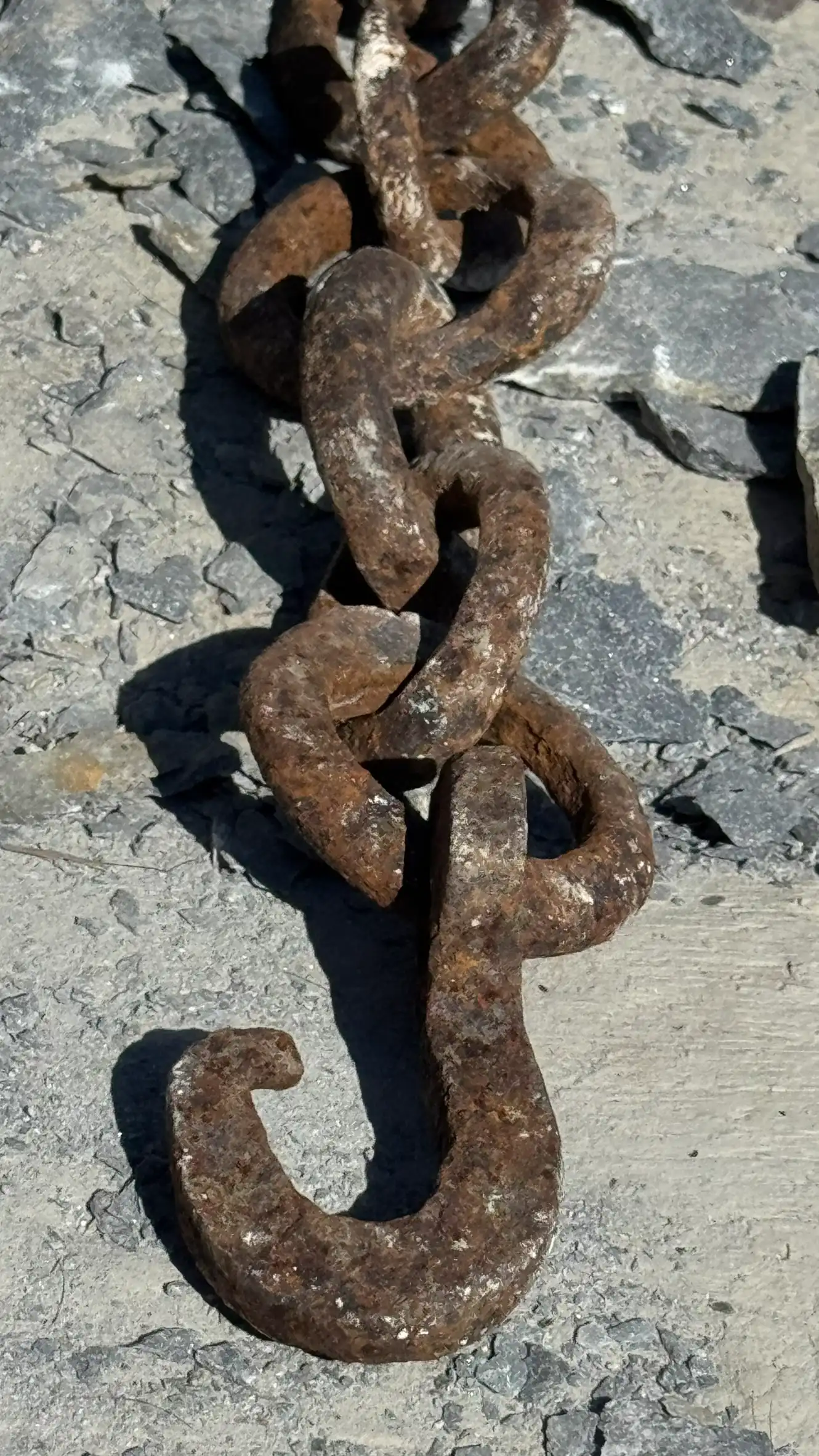
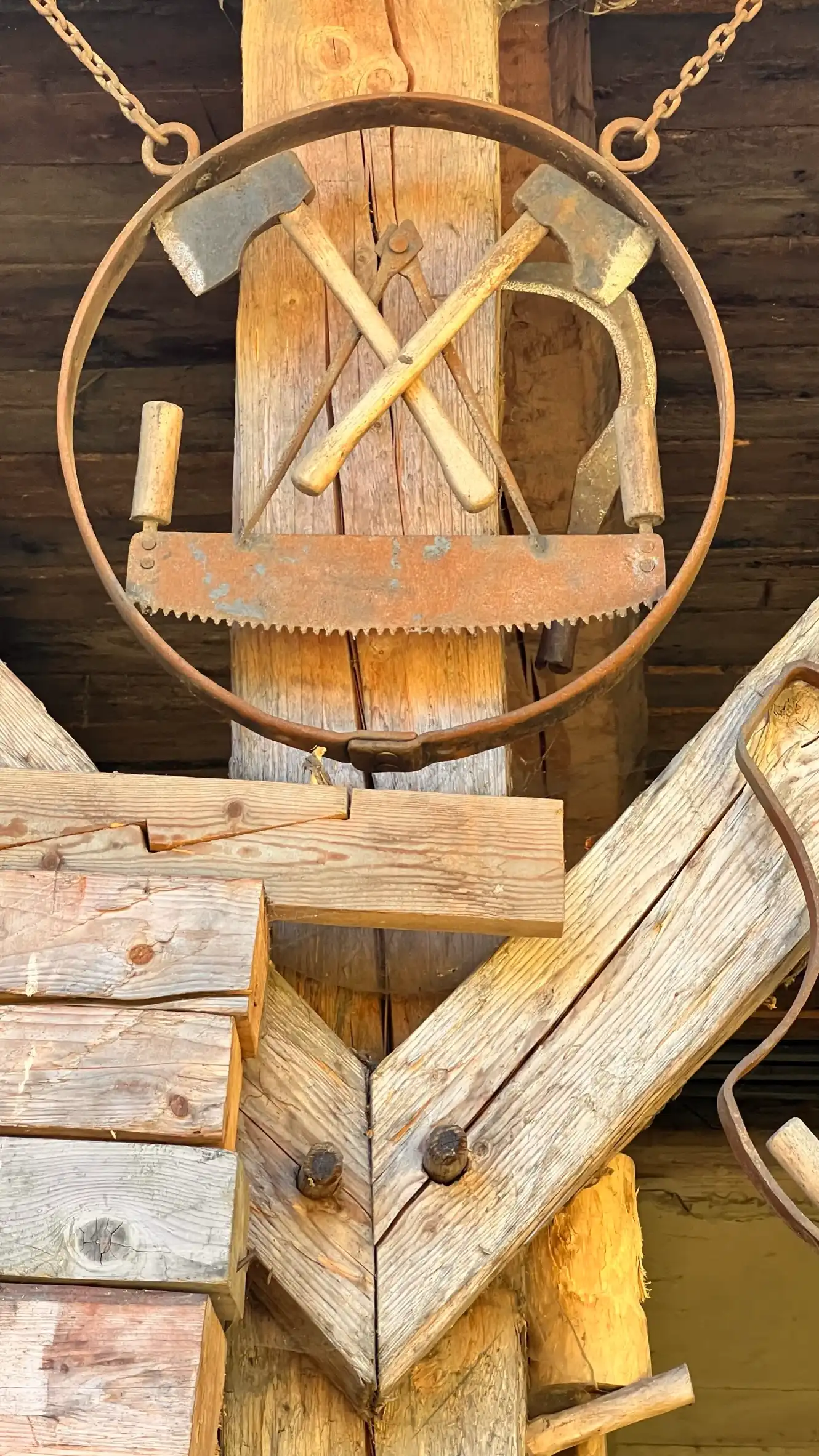
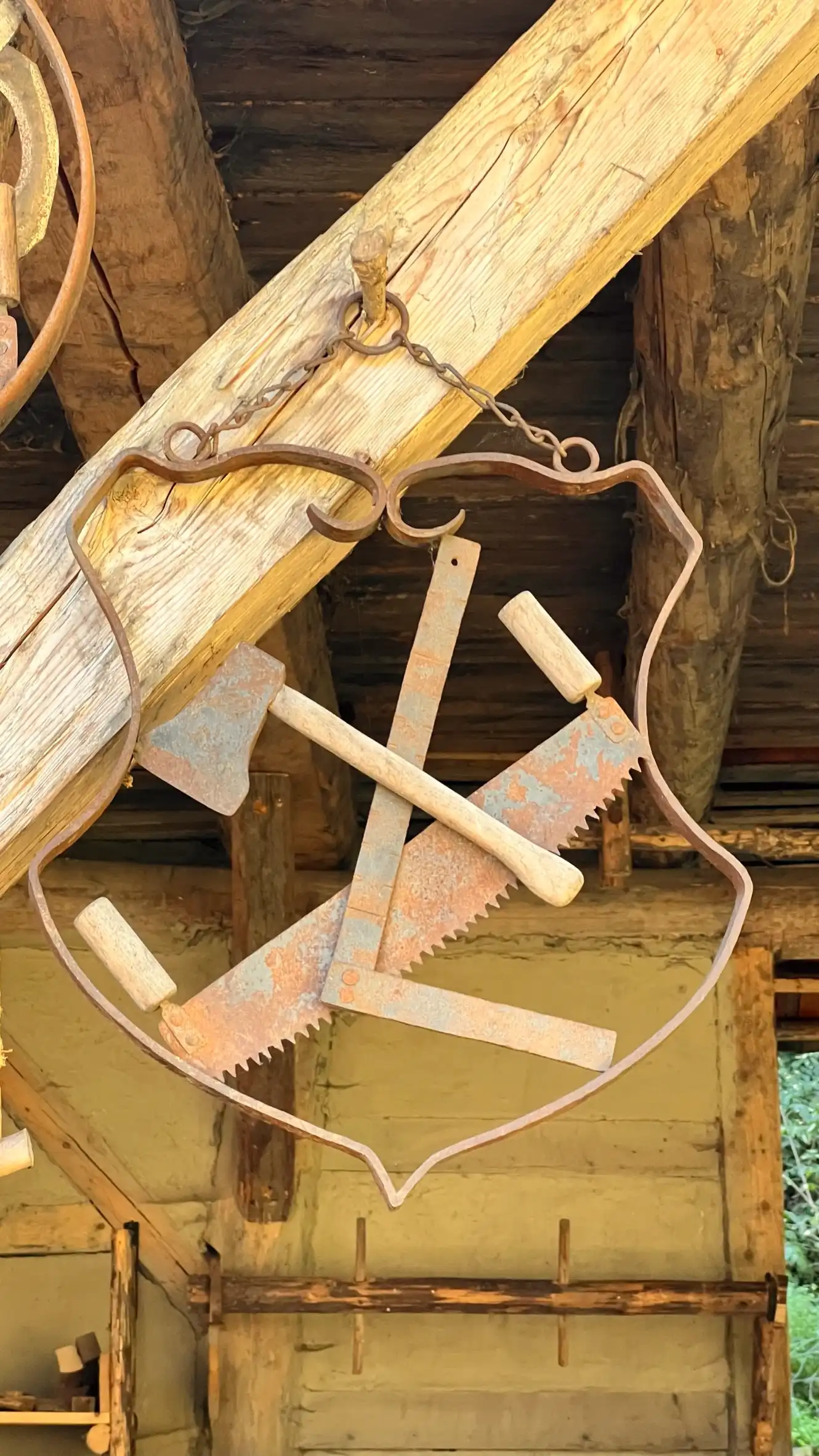

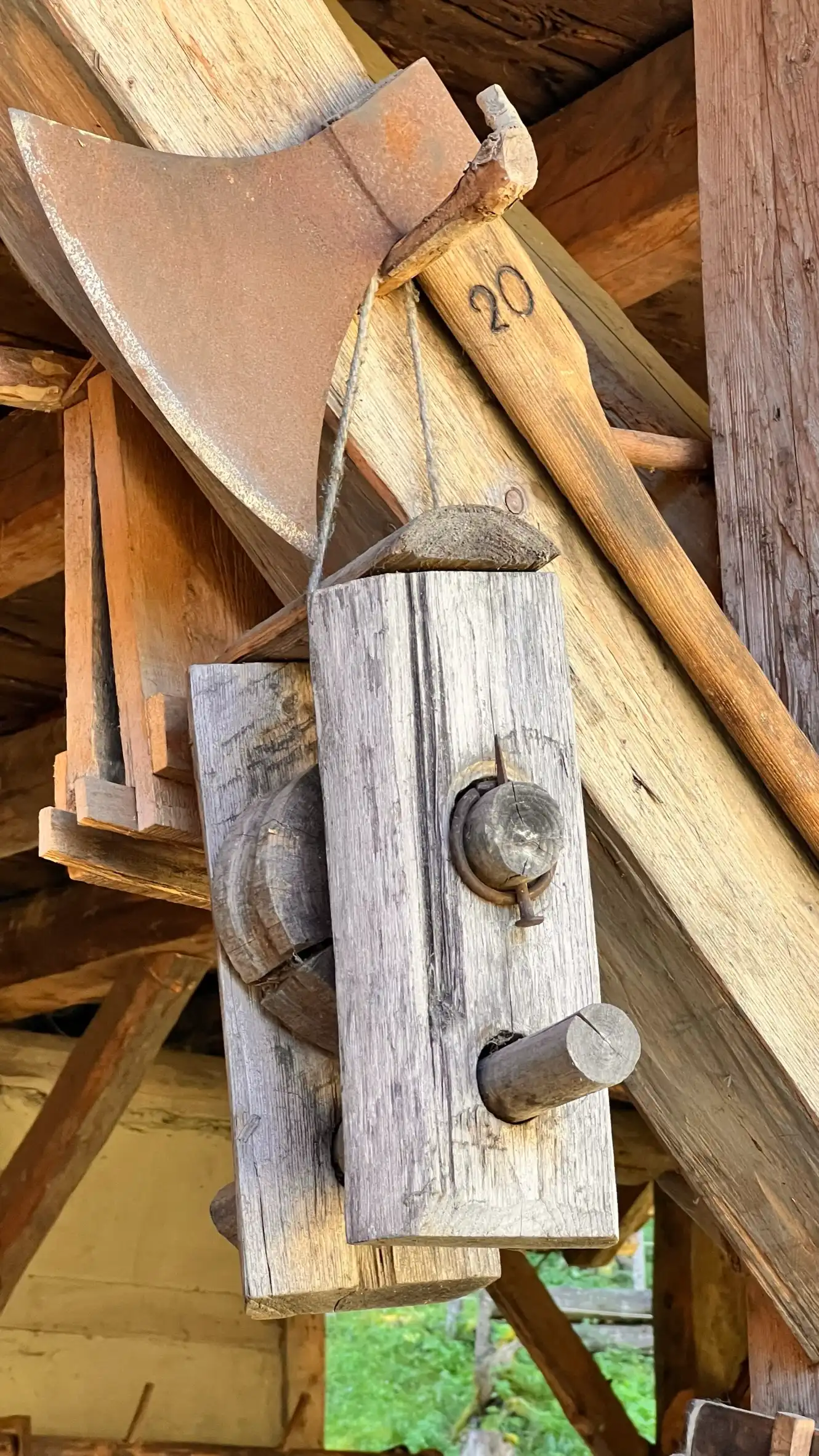
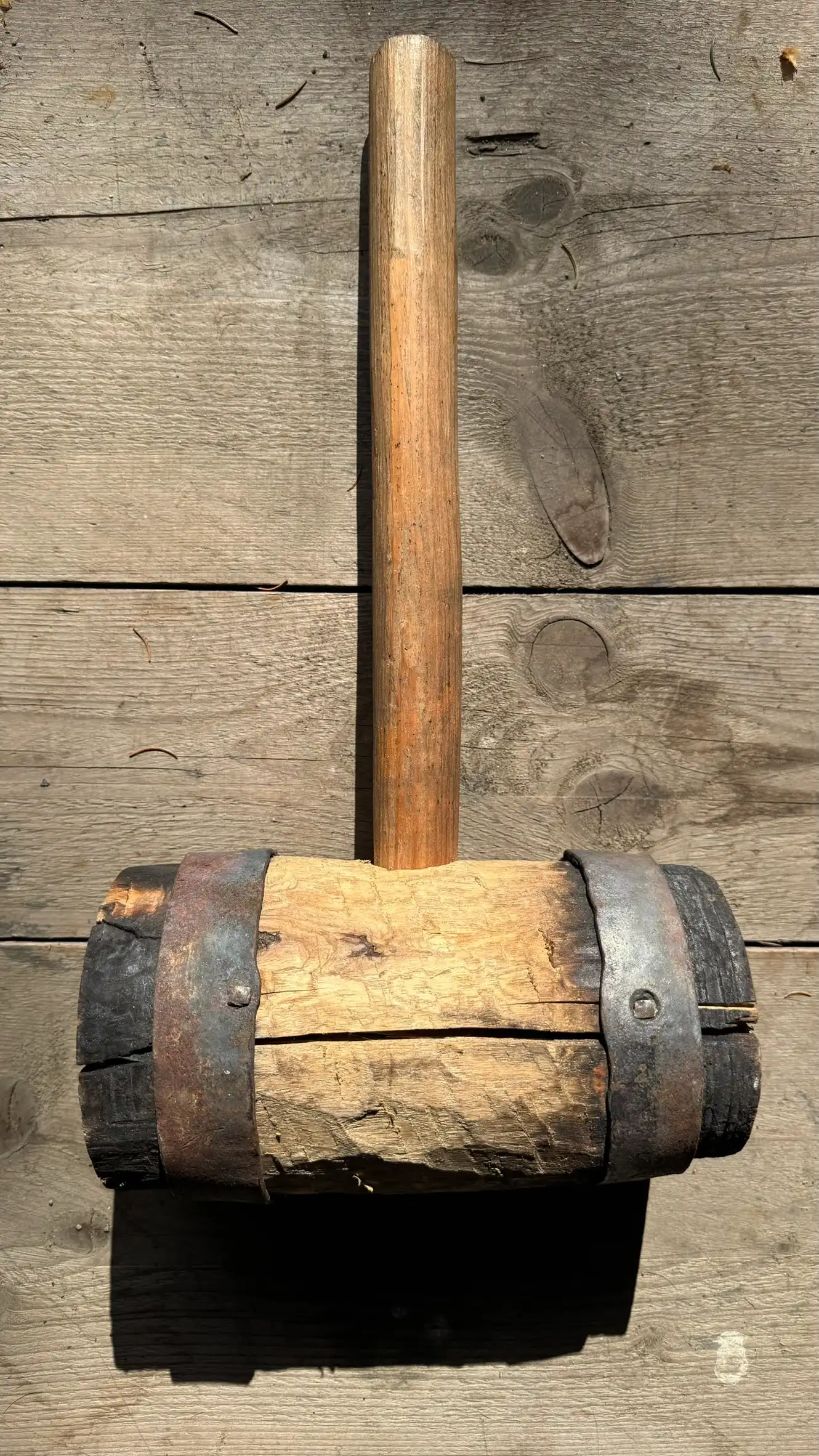
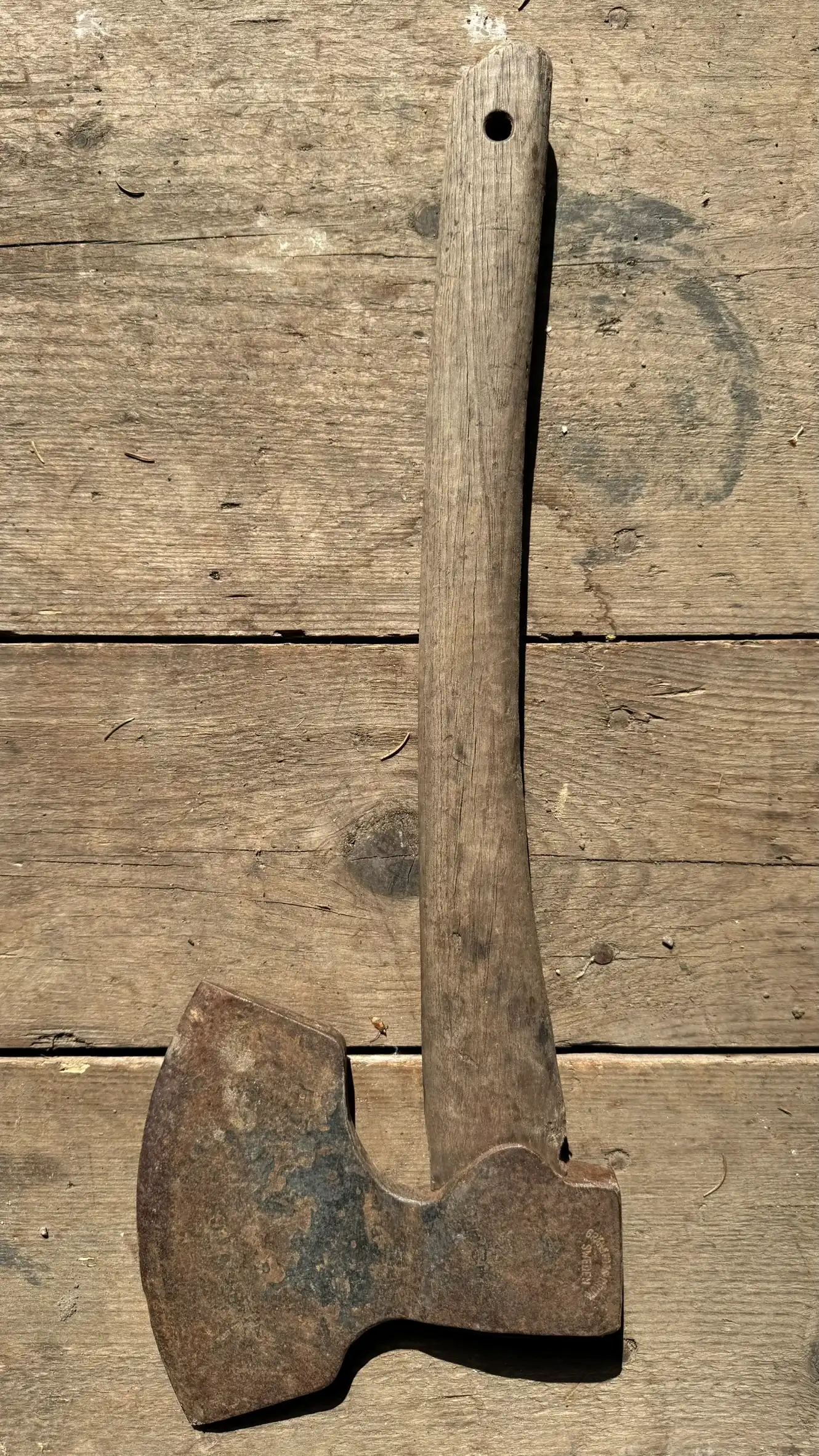
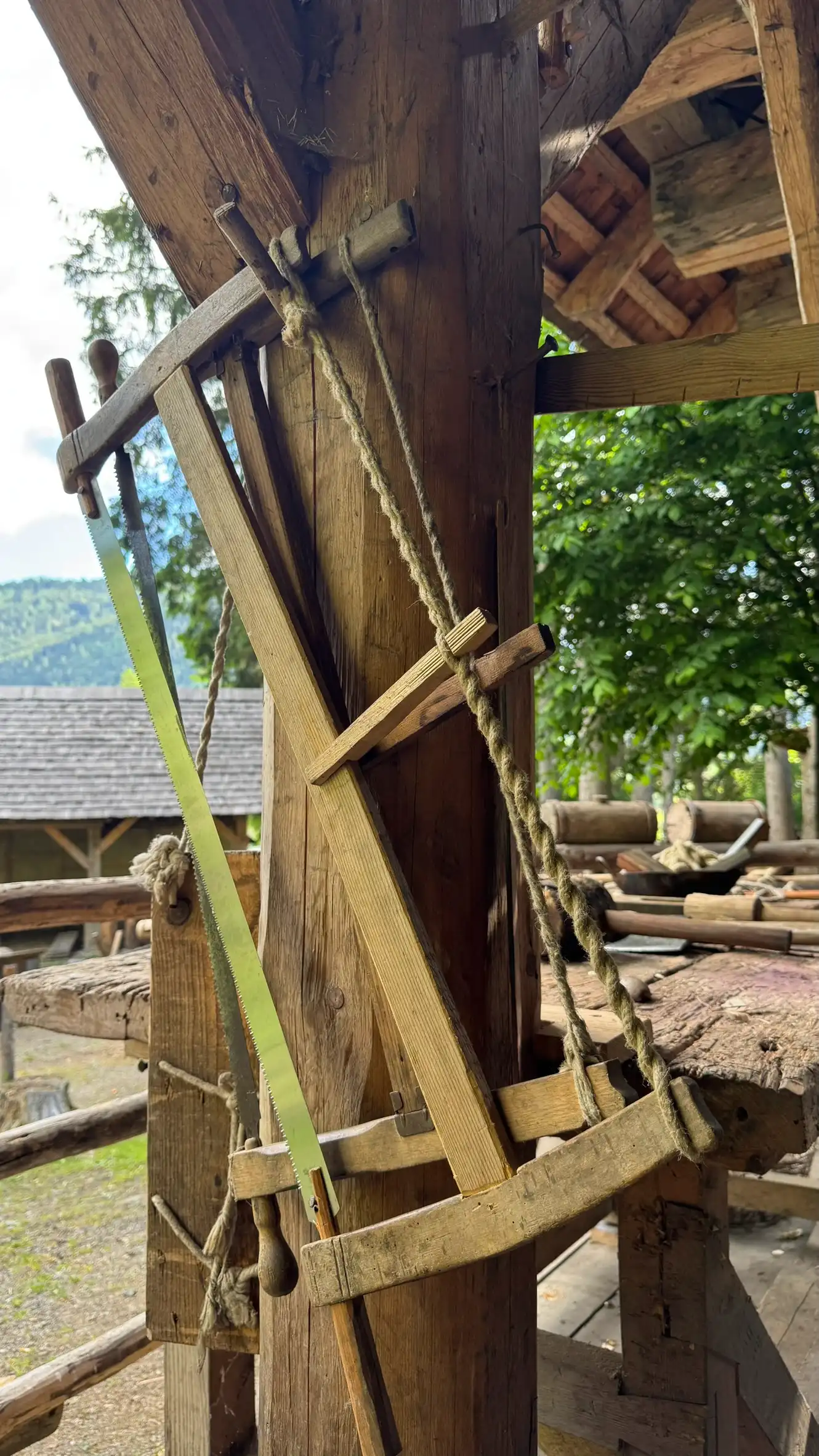

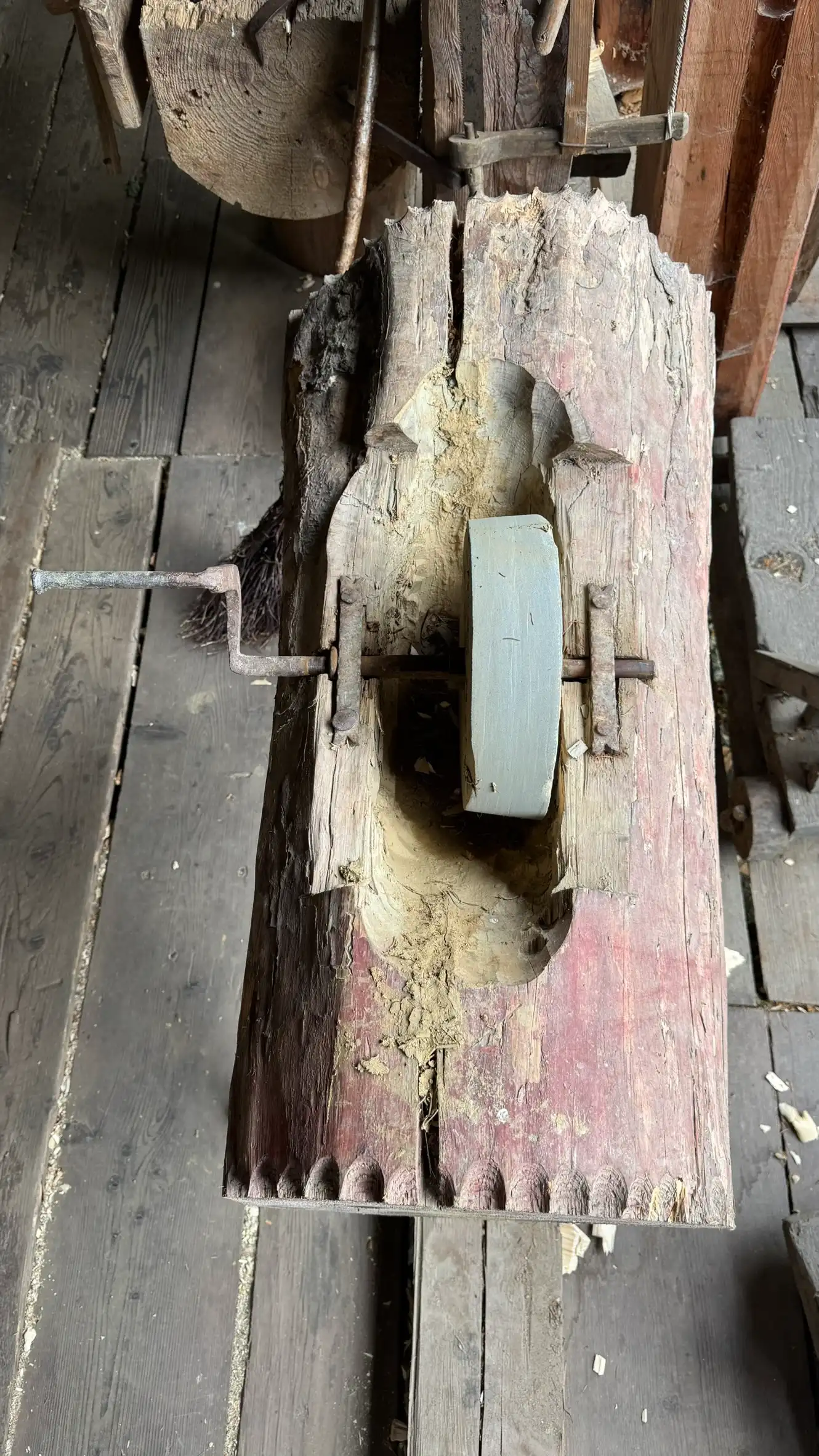
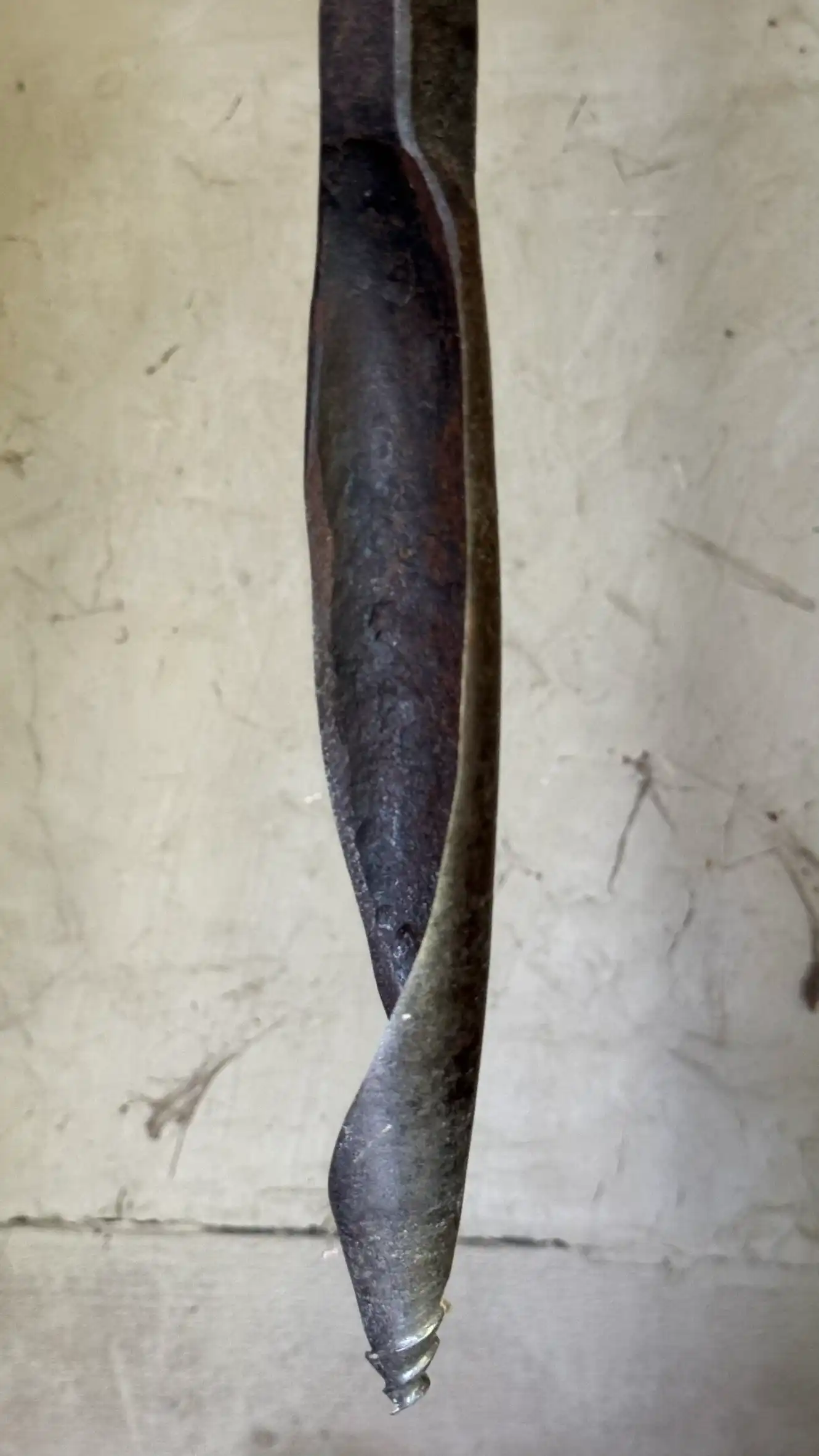
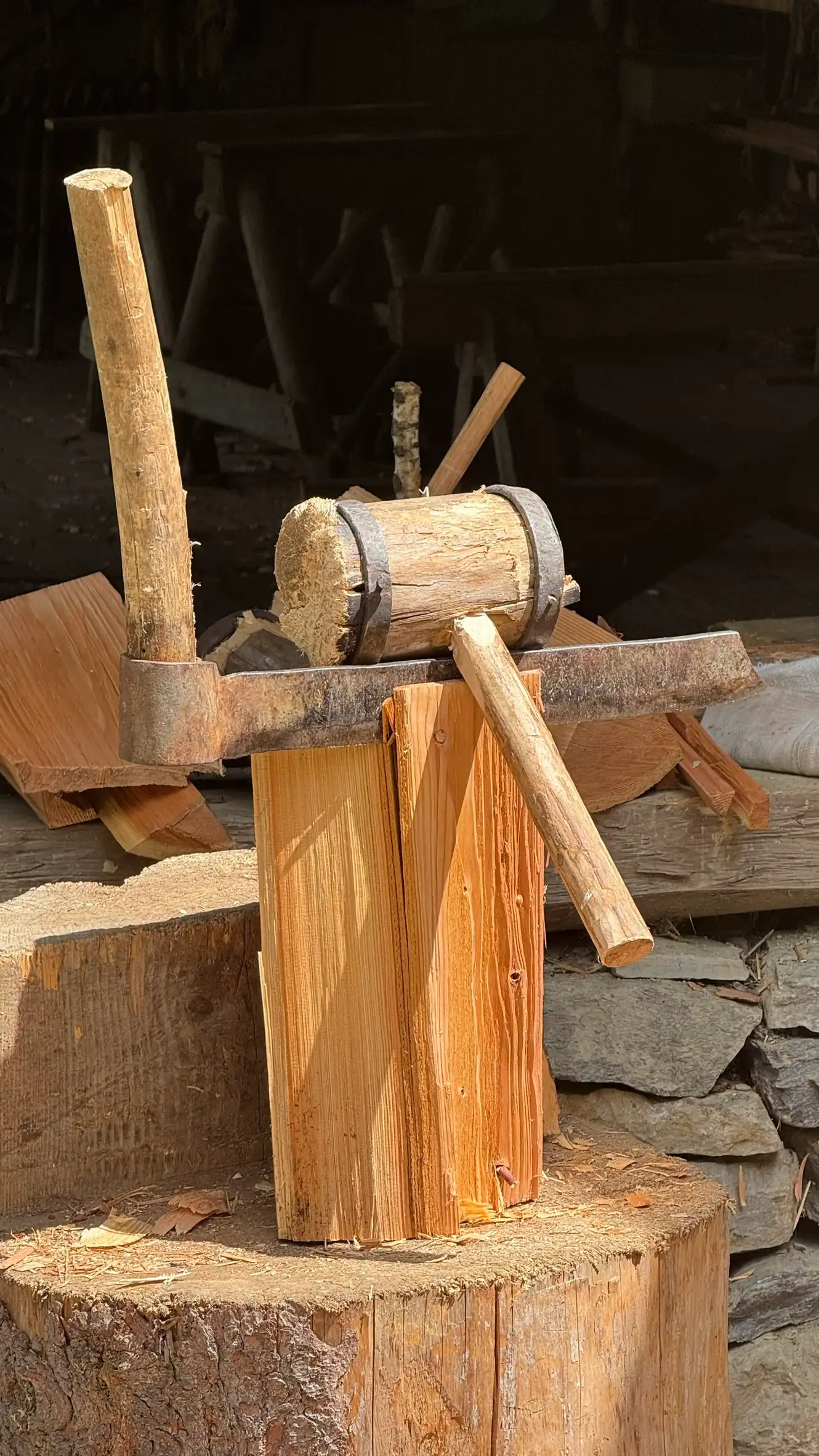
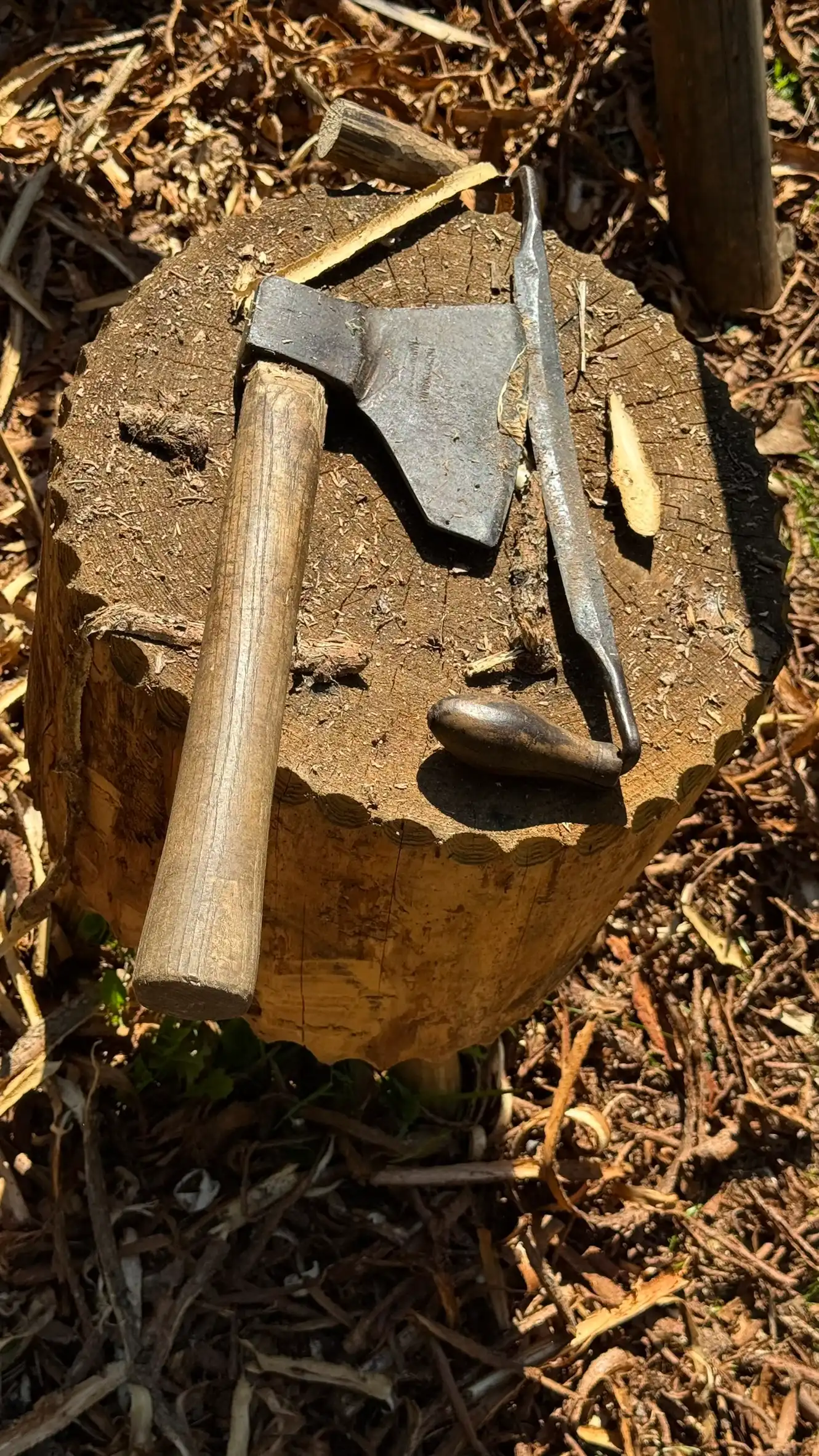

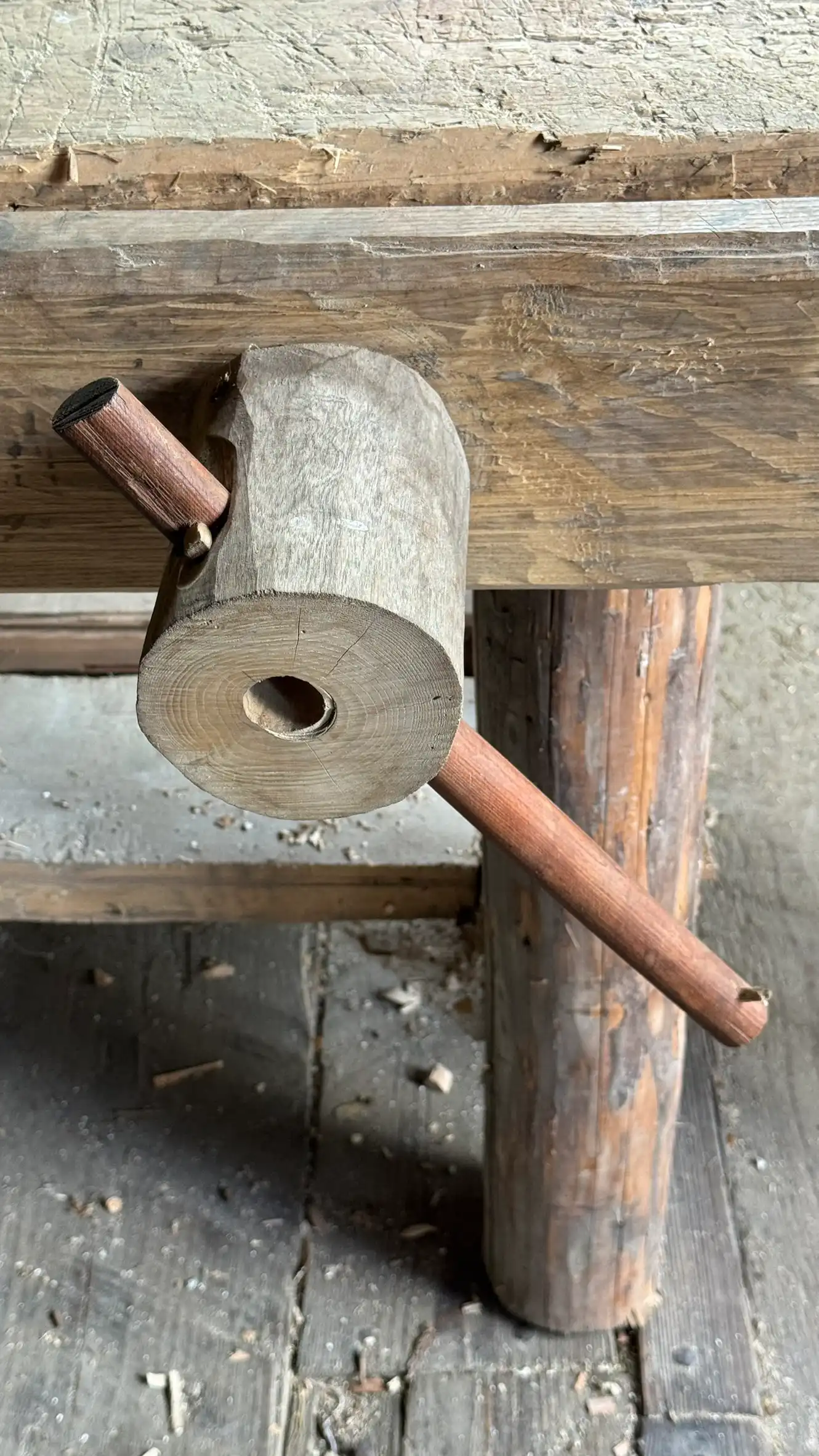
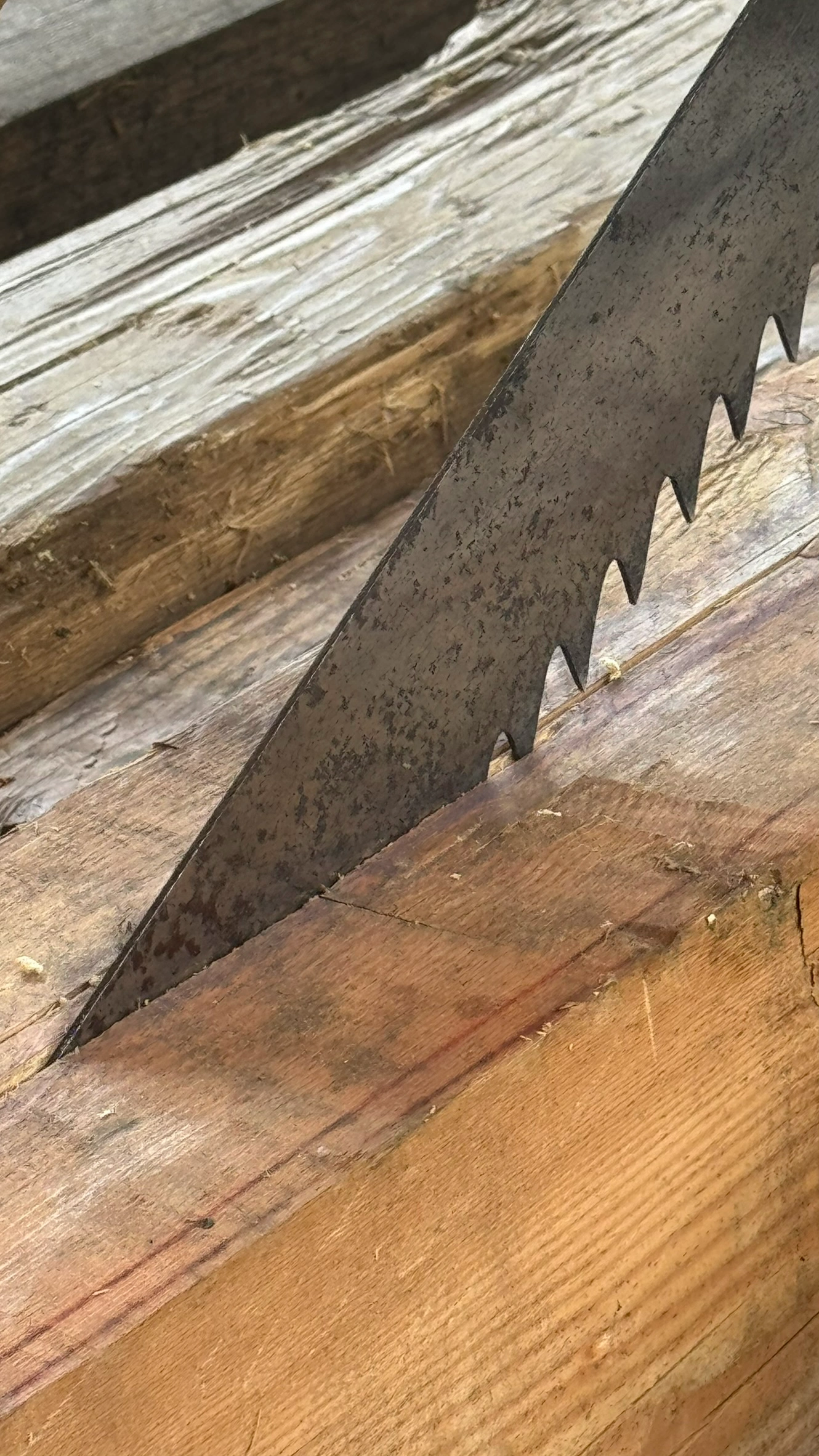
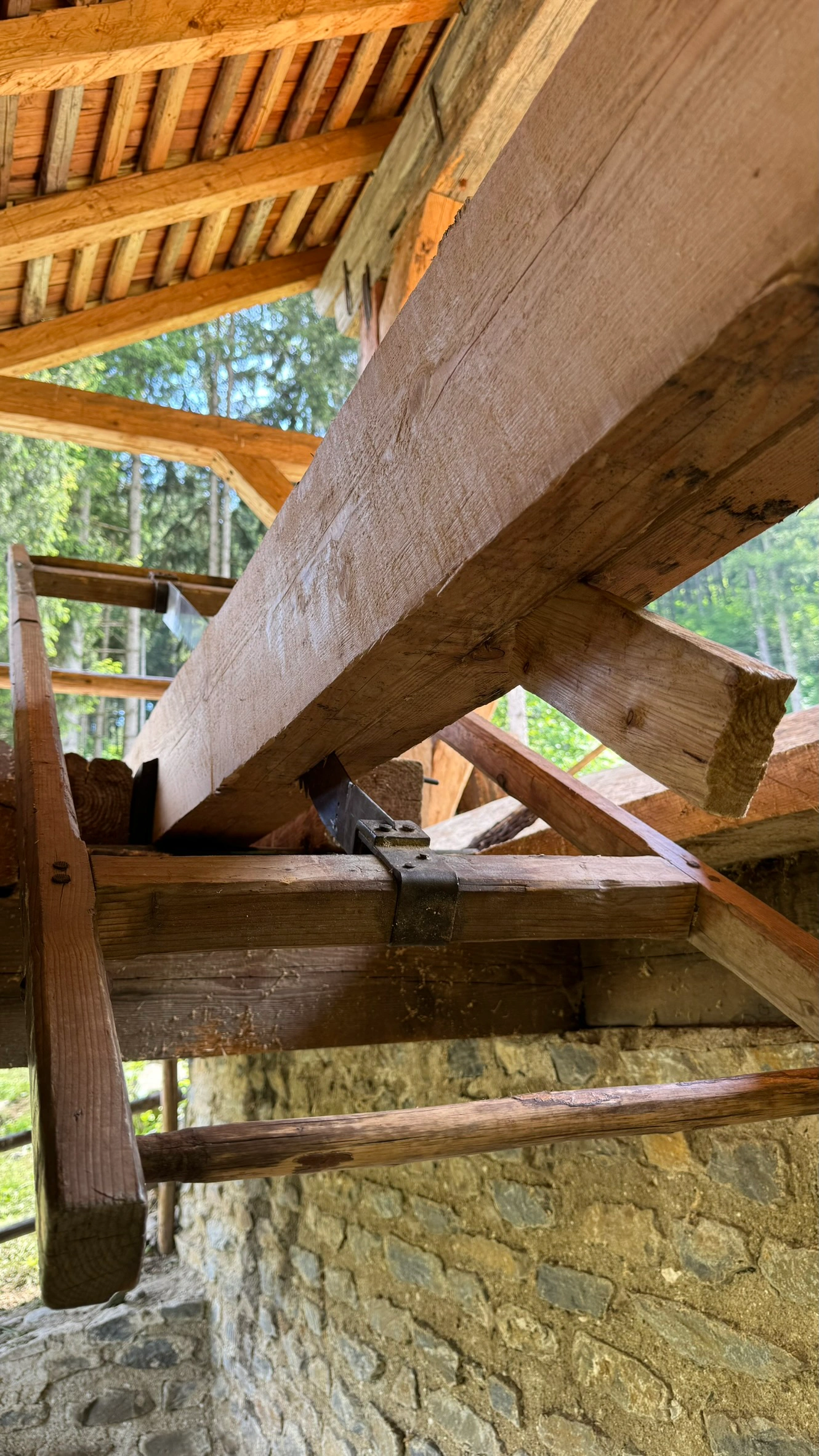
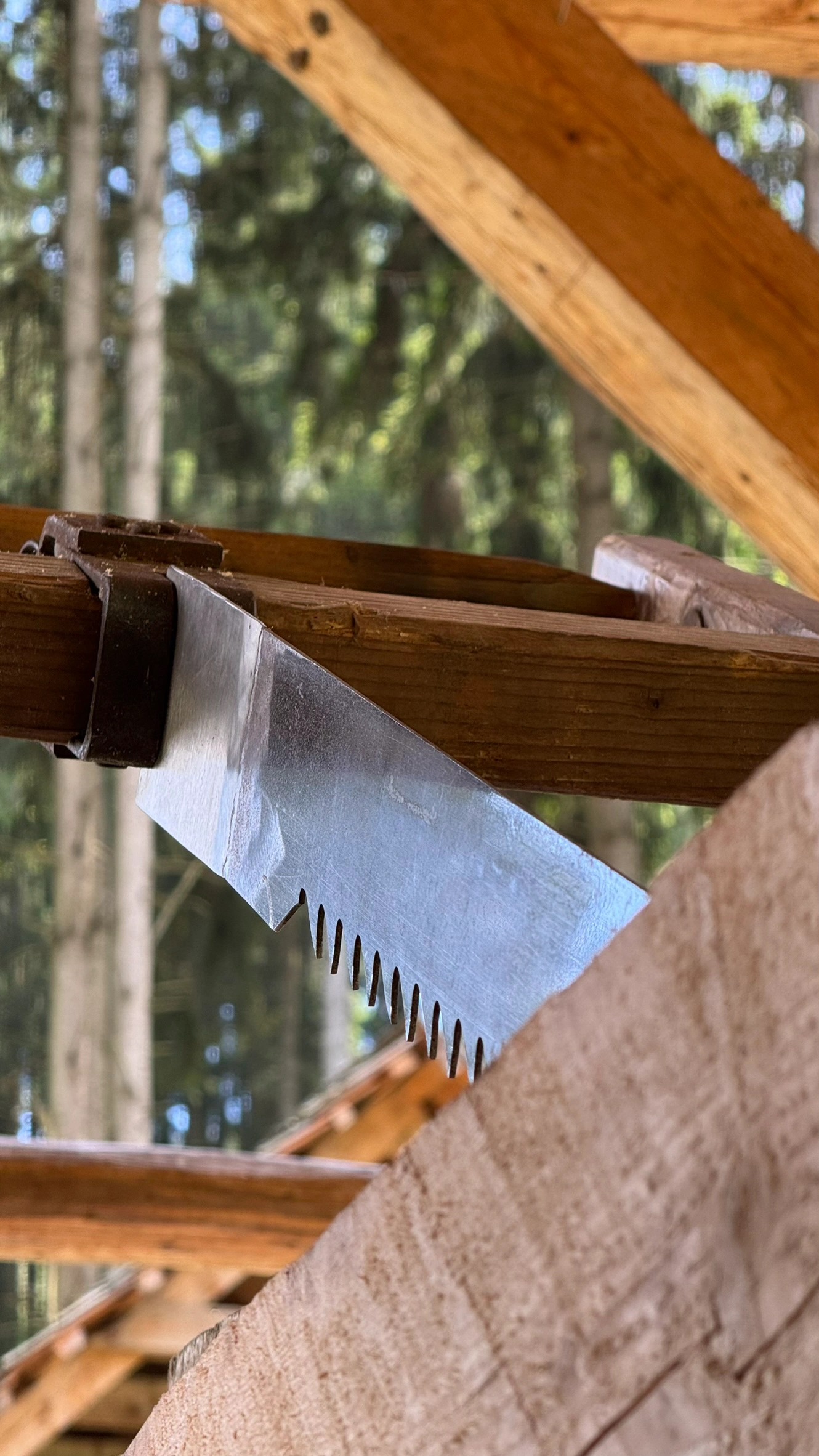
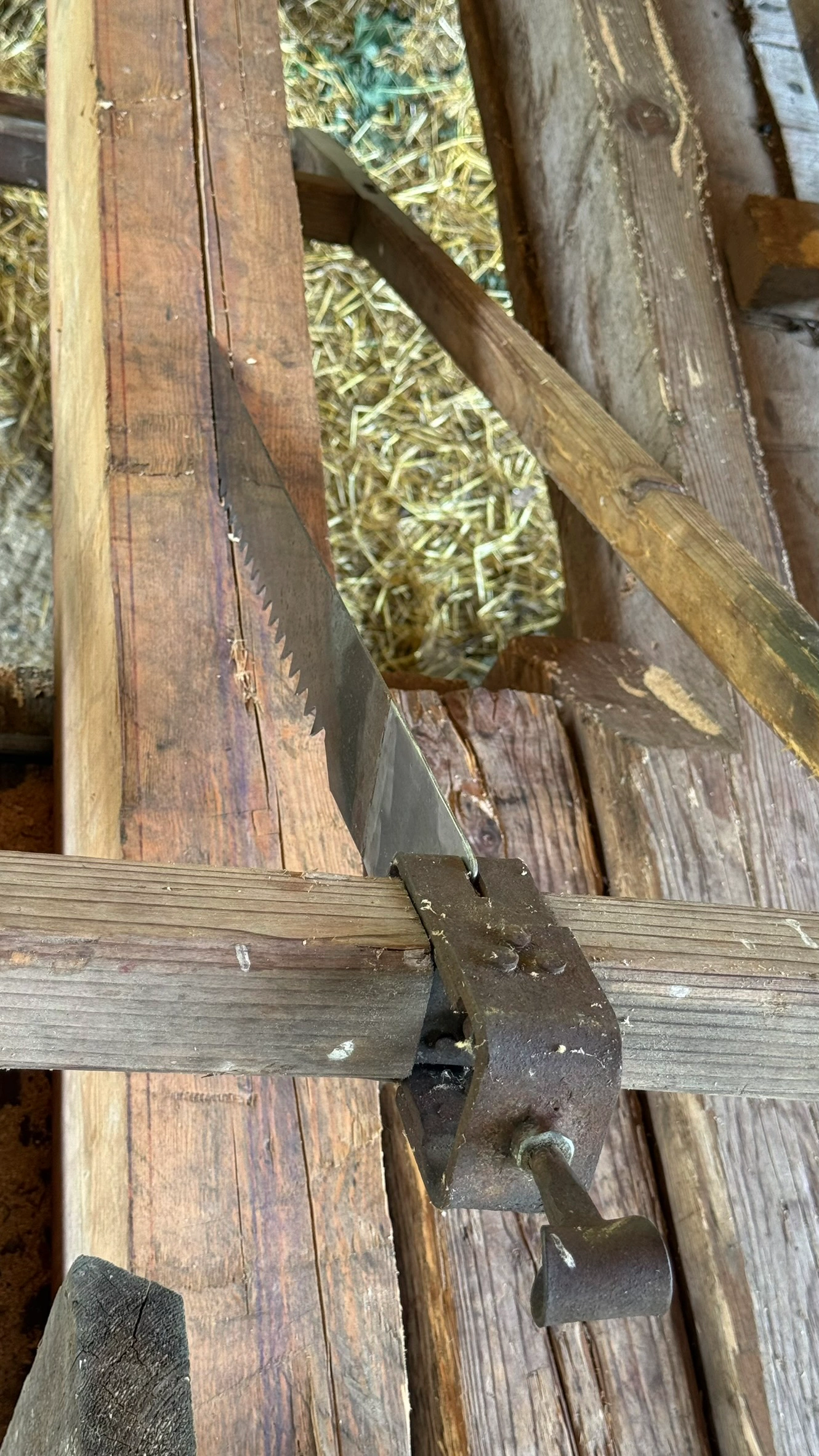
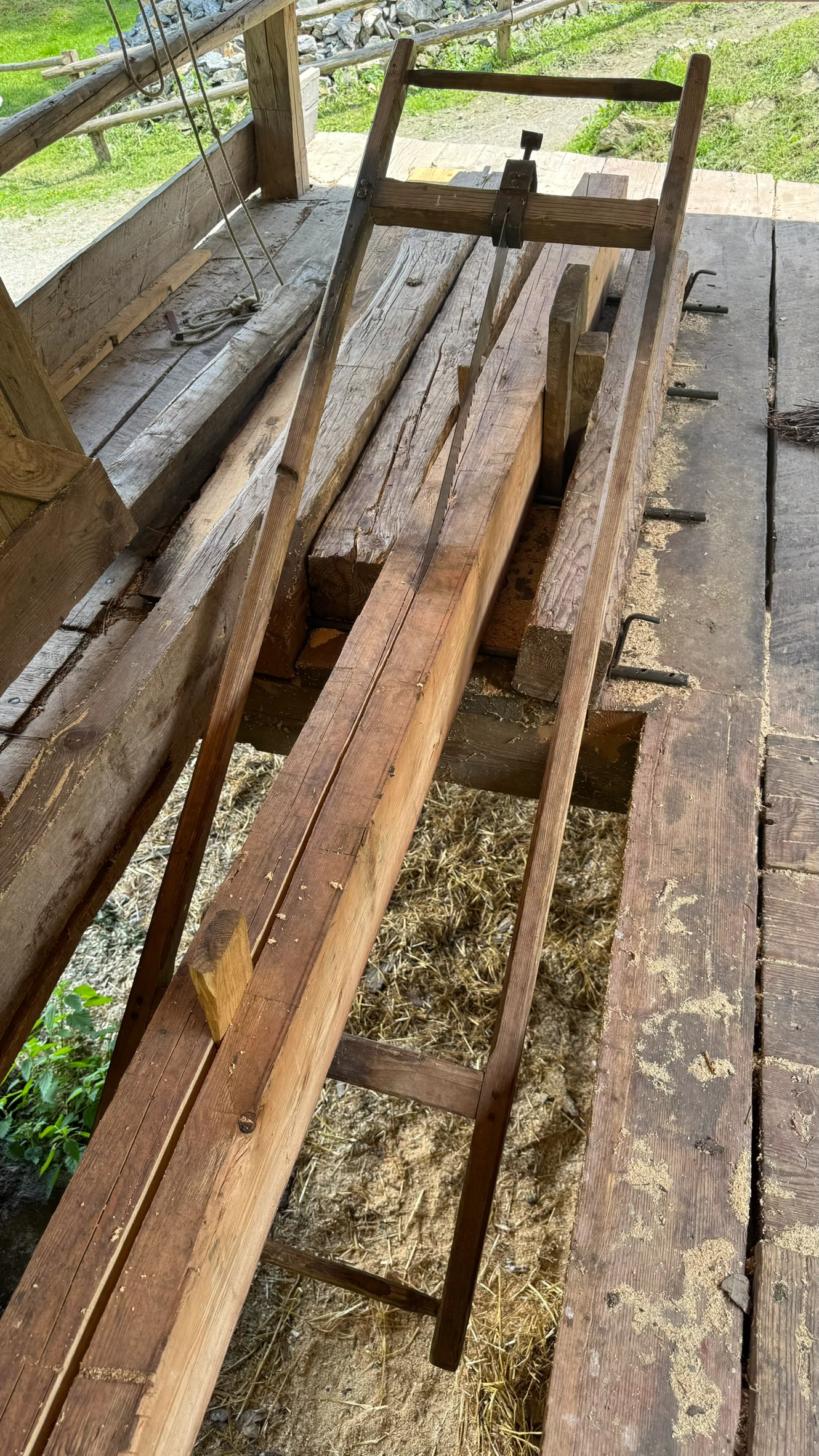
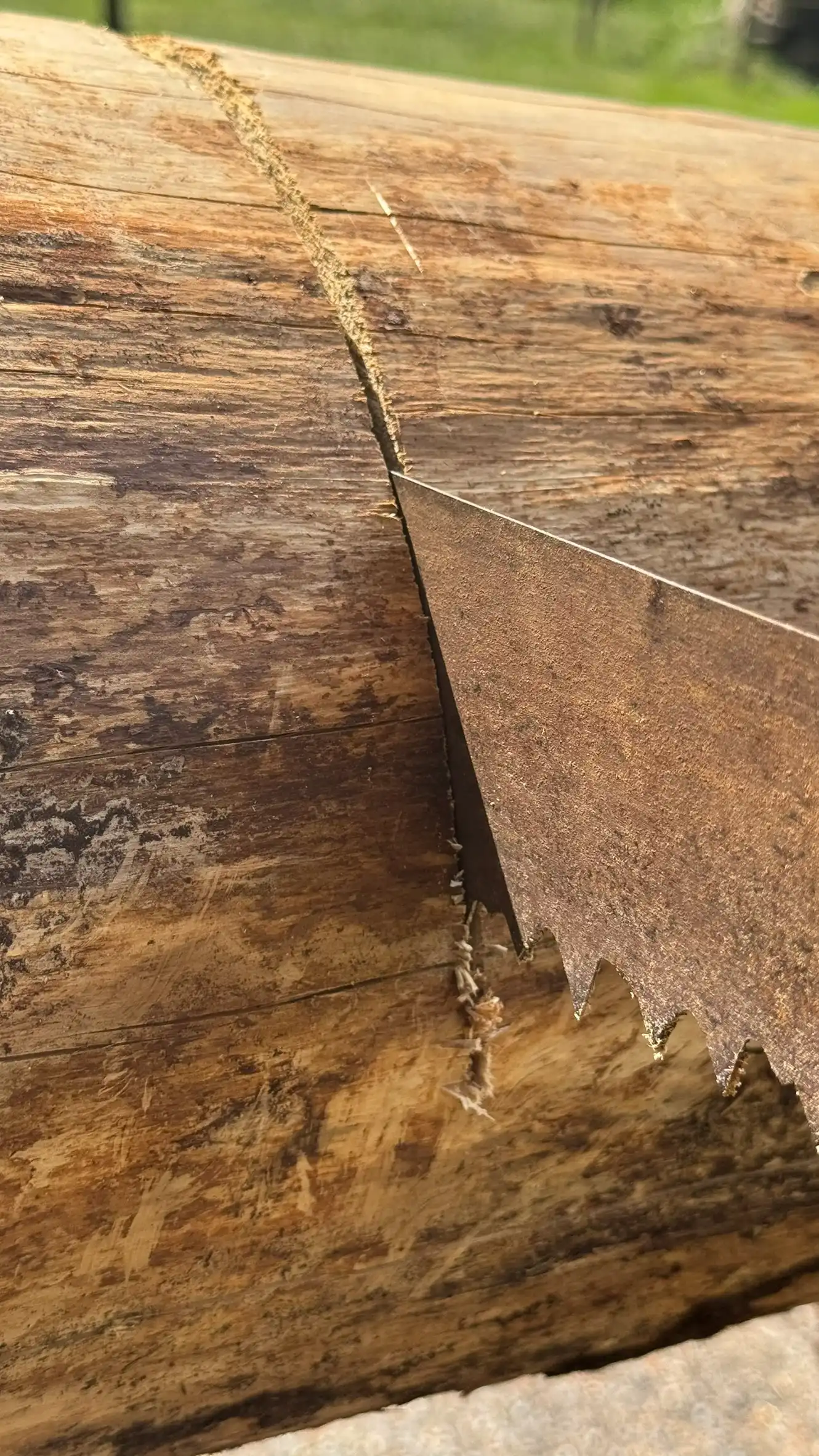



Deep Dive | Tools used in Medieval Construction
Reading Time: 1:40 min
Tools used by Medieval Masons
Mallet: A wooden hammer used to strike chisels or shape stone gently.
Chisel: A metal tool with a sharpened edge for carving or cutting stone.
Pickaxe: Used for breaking up hard stone or earth.
Trowel: A flat-bladed tool for applying and smoothing mortar.
Plumb Line: A string with a weight to ensure vertical alignment.
Set Square: Used to check and mark right angles on stones.
Compass: A large tool for drawing circles or arcs in stonework.
Level: A simple water or spirit level to ensure horizontal surfaces.
Straightedge: A long, flat piece of wood or metal for checking straightness.
Tools used by Medieval Carpenters
Adze: A curved blade set at a right angle to the handle for smoothing wood.
Broad Axe: A wide-bladed axe for hewing logs into beams.
Saw: A toothed blade for cutting wood; both frame saws and hand saws were common.
Auger: A drill-like tool for boring holes in wood.
Brace and Bit: Used for drilling; an early form of the hand drill.
Hammer: For driving nails or pegs into wood.
Chisel: Used for carving or shaping joints in wood.
Drawknife: Pulled toward the user to shave wood, often for shaping beams.
Marking Gauge: A tool to scribe lines parallel to an edge for precise cuts.
Tools used by Medieval Forges (Blacksmiths)
Anvil: A heavy iron block on which metal was shaped.
Hammer: Used to strike and shape heated metal.
Tongs: Long-handled tools for gripping hot metal.
Bellows: Devices for blowing air into the forge to maintain high temperatures.
Files: For smoothing and shaping metal after forging.
Swage Block: A large iron block with various shapes used to form metal.
Punches: For making holes in hot metal.
Hardie: A chisel-like tool fixed in the anvil for cutting metal.
Tools used for making Roof Shingles
Froe: A blade used with a mallet to split wood along the grain for shingles.
Mallet: Used to strike the froe without damaging it.
Drawknife: For shaving and shaping wooden shingles.
Hatchet: A small axe for trimming and shaping shingles.
Plane: For smoothing the surface of shingles.
Measuring Stick: Used to ensure uniform size of shingles.
Chalk Line: A cord coated in chalk for marking straight lines on wood.